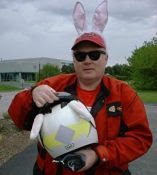
Sunday, July 5, 2015
Time Flies
Time sure flies when you're having fun. My last posting was in 2008. Lots of stuff has happened since then but first I will lead with important stuff. On September 13, 1965, a time capsule was places in the concrete steps of the new Newmarket Rocking Chair Theatre, a state-of-the-art 70mm movie screen with plush comfy rocking chairs. The plaque indicates that the time capsule is to be opened on Saturday, September 13, 2015... fifty years into the future. Well, the future is here. I'm contacting the cities of Hampton and Newport News (not sure where the boundary lies) to discover if they plan a big celebration for this grand occasion.

Monday, November 24, 2008
Team Crabby
Welcome To The Sugden Scholar
The Sugden Scholar was a student publication of the upper classes of Robert Sugden Elementary, a private school in Hampton, Virginia. It was produced on an old `Ditto` mimeograph machine of the 1960s (ours was hand-cranked and lived in the principal's office). Several students contributed, mostly from my class of 1966. One of the features was the `Dear Crabby` column where David Drucker and Robert Munday answered submissions and dispensed advice. David Freeston did most of the artwork and illustrations.
From Wikipedia:
The ditto machine (spirit duplicator) used two-ply "spirit masters" or "ditto masters". The first sheet could be typed, drawn, or written upon. The second sheet was coated with a layer of colored wax. The pressure of writing or typing on the top sheet transferred colored wax to its back side, producing a mirror image of the desired marks (this acted like a reverse of carbon paper). The two sheets were then separated, and the first sheet was fastened onto the drum of the (manual or electrical) machine, with the waxed side out.
The usual wax color was aniline purple, a cheap, durable pigment that provided good contrast, but other colors were available. Unlike mimeo, ditto had the useful ability to print multiple colors in a single pass, which made it popular with cartoonists. One well-made ditto master could at most print about 500 copies--far fewer than a mimeo stencil could manage.
From Wikipedia:
The ditto machine (spirit duplicator) used two-ply "spirit masters" or "ditto masters". The first sheet could be typed, drawn, or written upon. The second sheet was coated with a layer of colored wax. The pressure of writing or typing on the top sheet transferred colored wax to its back side, producing a mirror image of the desired marks (this acted like a reverse of carbon paper). The two sheets were then separated, and the first sheet was fastened onto the drum of the (manual or electrical) machine, with the waxed side out.
The usual wax color was aniline purple, a cheap, durable pigment that provided good contrast, but other colors were available. Unlike mimeo, ditto had the useful ability to print multiple colors in a single pass, which made it popular with cartoonists. One well-made ditto master could at most print about 500 copies--far fewer than a mimeo stencil could manage.
Subscribe to:
Comments (Atom)




